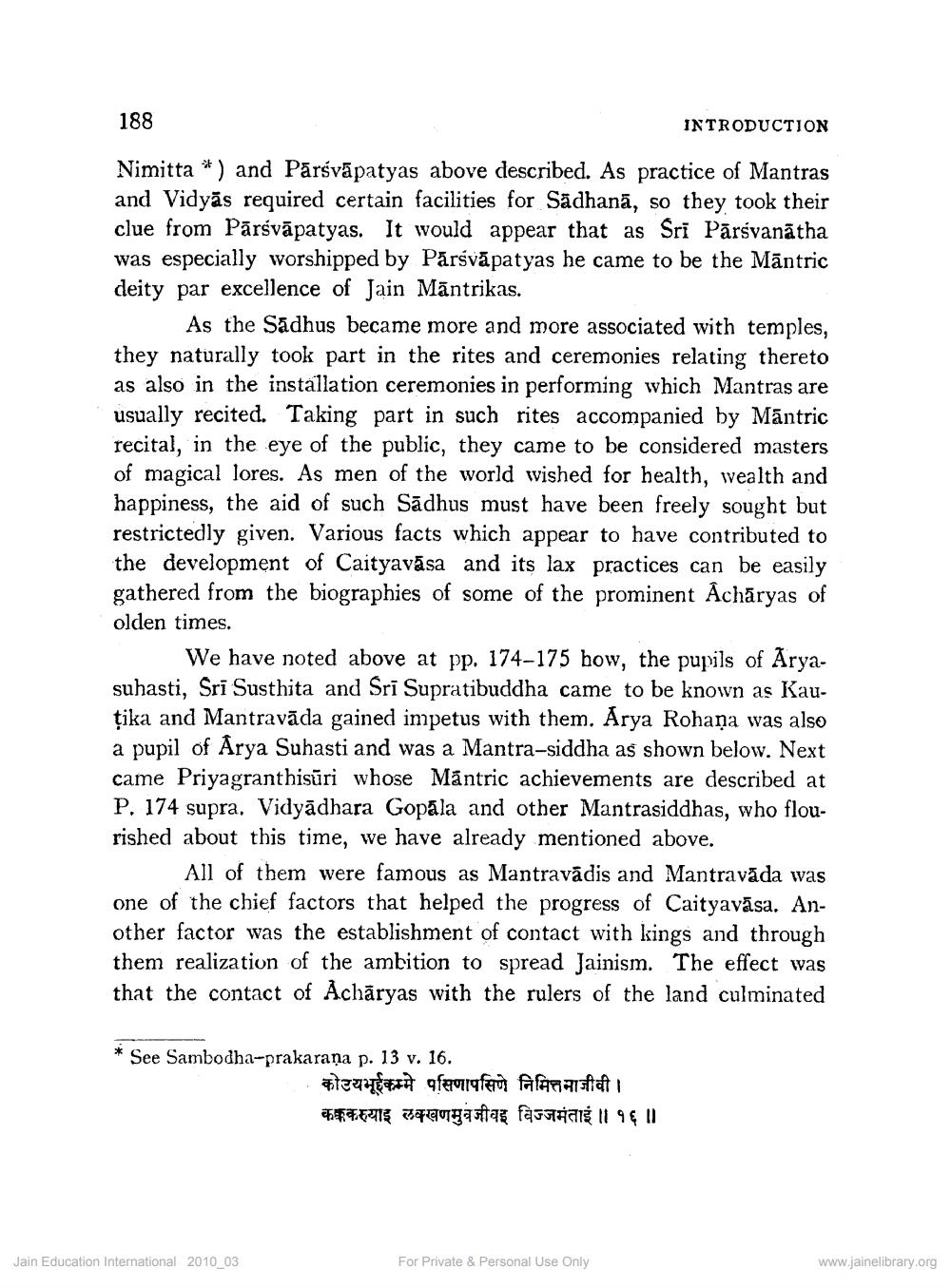________________
188
INTRODUCTION
Nimitta *) and Pārsvāpatyas above described. As practice of Mantras and Vidyās required certain facilities for Sadhanā, so they took their clue from Pārsvāpatyas. It would appear that as Sri Pārsvanātha was especially worshipped by Pārsvāpatyas he came to be the Māntric deity par excellence of Jain Māntrikas.
As the Sadhus became more and more associated with temples, they naturally took part in the rites and ceremonies relating thereto as also in the installation ceremonies in performing which Mantras are usually recited. Taking part in such rites accompanied by Mantric recital, in the eye of the public, they came to be considered masters of magical lores. As men of the world wished for health, wealth and happiness, the aid of such Sadhus must have been freely sought but restrictedly given. Various facts which appear to have contributed to the development of Caityavāsa and its lax practices can be easily gathered from the biographies of some of the prominent Achāryas of olden times.
We have noted above at pp. 174-175 how, the pupils of Aryasuhasti, Sri Susthita and Sri Supratibuddha came to be known as Kautika and Mantravāda gained impetus with them. Arya Rohana was also a pupil of Arya Suhasti and was a Mantra-siddha as shown below. Next came Priyagranthisūri whose Mantric achievements are described at P. 174 supra. Vidyādhara Gopāla and other Mantrasiddhas, who flourished about this time, we have already mentioned above.
All of them were famous as Mantravādis and Mantravāda was one of the chief factors that helped the progress of Caityavāsa. Another factor was the establishment of contact with kings and through them realization of the ambition to spread Jainism. The effect was that the contact of Achāryas with the rulers of the land culminated
* See Sambodha-prakarana p. 13 v. 16.
. कोउयभूईकम्मे पसिणापसिणे निमित्तमाजीवी। कककरुयाइ लक्खणमुवजीवइ विज्जमंताई ॥१६॥
Jain Education International 2010_03
For Private & Personal Use Only
www.jainelibrary.org




